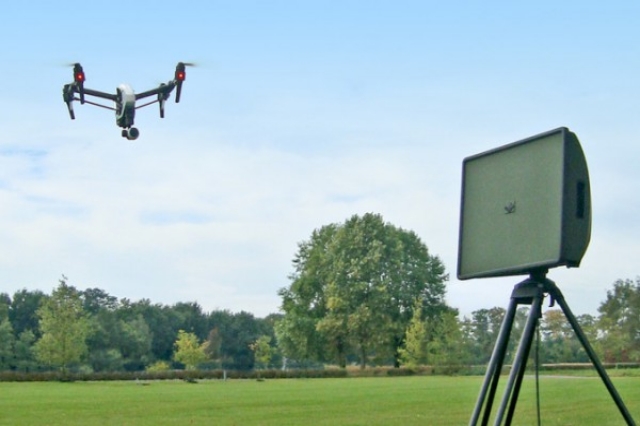
Numerous near misses between drones and commercial aircraft occurred last year. In an incident, a drone was about 25 m close to a Boeing 777 jet near Heathrow Airport. This was revealed by the UK Airprox Board, which specializes in investigating incidents in the British airspace.
The British Airline Pilots Association (BALPA) has called for research to be made to determine effects of a possible collision between drones and manned aircraft. Safety experts have warned that effects could include engine failures that could crash planes, smashed windscreen that could shower flight crew with glass. The drones moving at high speed colliding with a fast-moving jumbo jet could smash through fuel tanks or hydraulic lines.
Potential Accidents Can Happen Because of Lawless Drones
Scroll down for video

VR Drone Geek
There are regulations to stop this from occurring, but the laws aren’t strict enough. The British Civil Aviation Authority has insisted that only drones more than 20 kg need to be registered. The CAA has released a mediocre Dronecode video and the feathery advice of “use your common sense and fly sensibly, you could be prosecuted if you don’t.”
The rules are quite easy to understand: drones should always be kept within view, they shouldn’t be flown above a height of 122 meters or beyond a horizontal distance of 500 meters. Drones containing cameras should be kept 50 meters away from people, vehicles, or structures. Users should be careful not to intrude into the privacy of others.
By contrast, in the United States, where about 700,000 drones were purchased only last year, it is mandatory for all drones weighing more than 0.5 pounds to be registered and labelled with a Federal Aviation Authority (FAA) registration number. This was enforced over 700 cases of near misses between drones and airliners and numerous cases of injuries caused by drones.
The CAA has been on the defensive about their relaxed rules and have been quick to point out that prosecutions have occurred and fines have been paid. They fail to mention that this has only been possible in few cases due to the fact that the drones were labelled, making it easy to find the owner.

AllTop.com
Dog owners will be legally required to microchip their animals to help identification. Drones pose a greater danger than dogs. The United Kingdom must do as the United States has done and ensure that small drones are also registered and regulated to reduce accidental misuse of drones by their owners.
More information should be made available to the general public warning of the harmful effects of reckless usage of drones. Third-party insurance for drones as being used for vehicles could also be made compulsory. All these measures can’t deal with a terrorist misuse of drones. Seeing as drones can carry cameras, they could also carry harmful weapons like guns or little explosive devices. Their high range and anonymous identity make them potentials for use in terrorism.
The Islamic State (ISIS) has already started using drones for surveillance missions and propaganda purposes. Drones can fly over barriers and most secured areas. If the Paris terrorists had used drones instead of suicide bombers, the casualties of the Paris terrorist incident would have been far higher. Drones could be used to attack crowds or target single individuals.
Various ways methods of suppressing the threats posed by drones are being discussed. There is the talk of programming drones in a way whereby they can’t be used near airports or government-owned buildings. But this is ineffective as the drones can be reprogrammed.
Drones can be detected through radar or radio signals used to navigate them. But this is quite costly. Their radio frequencies can be jammed by existing technology but crashed drones could cause another hazard.

RTV Oost
Multiple drone attacks on aircraft would definitely be deadly as no one has an idea of what to do in situations like this.
Drones are a good method of relaxation and they are a source of livelihood for many, but they have to be regulated and made sure they are not used for vicious purposes. Moreover, using a real-time GPS tracker for drones would be of big help to prevent and/or stop such.
Watch the video below